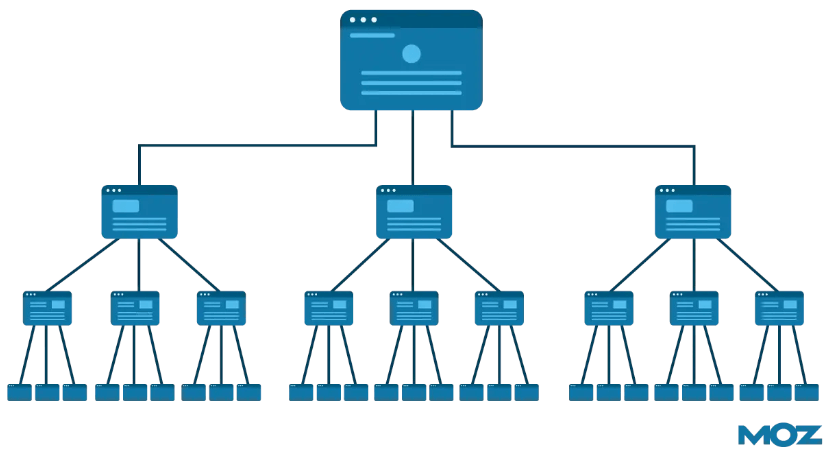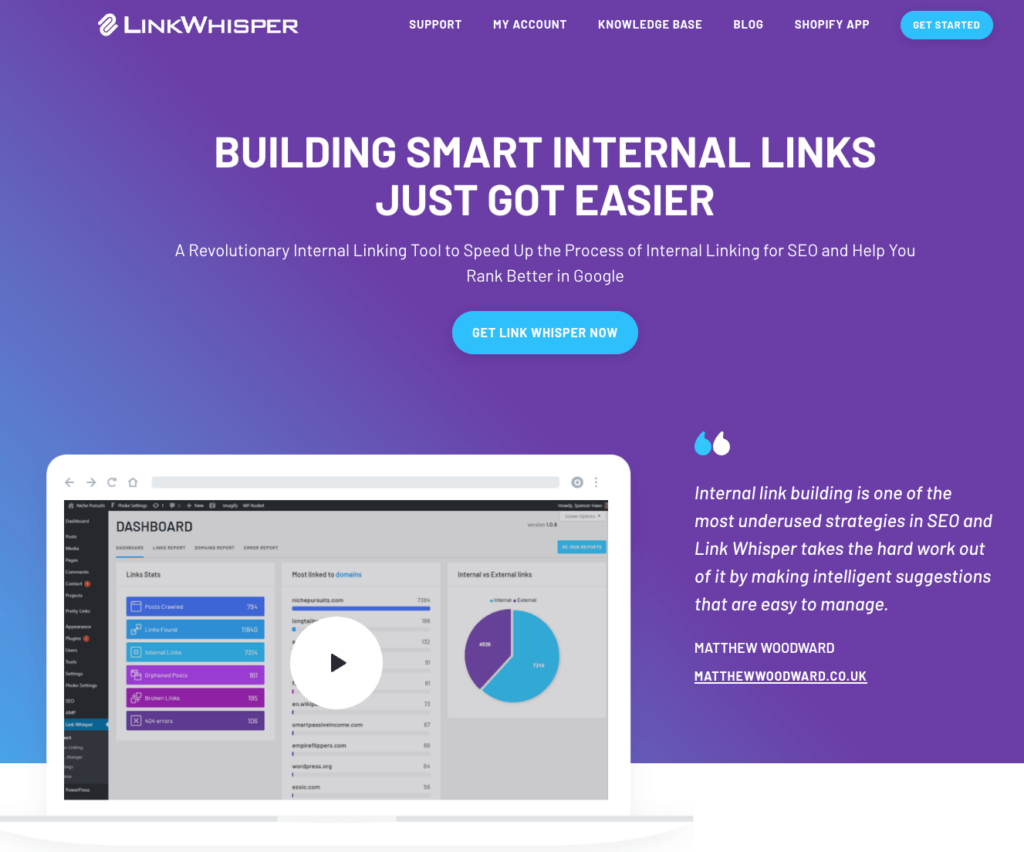Discover the secrets of internal linking for SEO in our comprehensive guide. Learn how to boost your website’s search engine ranking and enhance user experience through effective link structure.
In the vast and complex world of search engine optimization (SEO), internal linking remains a critical yet often overlooked strategy. It’s the scaffolding upon which site architecture is built, directly influencing both user experience (UX) and search engine performance.
This guide aims to unpack the intricate details of internal linking, providing digital marketers, SEO specialists, and content creators with a roadmap to leverage this powerful tool effectively.
Understanding Internal Linking

At its most fundamental, internal linking involves connecting one page of a website to another page within the same domain. This simple practice is pivotal for two main reasons: it aids search engines in discovering new pages and it enhances the user’s ability to navigate a website seamlessly.
Why are internal links important to Google?
For search engine crawlers, internal links act as pathways, guiding these bots as they index the web. A well-structured internal linking strategy can ensure that crawlers efficiently find and understand the importance and relevance of each page.
On the UX front, internal links help visitors find the information they seek swiftly, significantly improving site engagement and retention rates.
Best Practices for Internal Linking for SEO
Crafting an effective internal linking strategy requires thoughtful planning and execution. Here’s how to do it right:
Determine the Ideal Structure for Your Site
Before you start adding internal links haphazardly, it’s essential to sketch out the ideal structure for your site—a blueprint if you will. This structure should resemble a pyramid, with the homepage at the top, followed by main category pages, and finally, individual articles or product pages at the bottom. This hierarchy not only aids in organizing your content logically but also ensures that link equity (the value passed from one page to another through links) is distributed efficiently across your site.
A well-planned site structure, with a clear path from general to specific, allows users and search engines to understand the relative importance of each page. It also makes it easier for search engine crawlers to discover new content, paving the way for better indexation and higher rankings. When implementing internal links, always aim to do so in a way that mirrors and supports this structured approach, guiding visitors deeper into your website with each click.
Decide What Your Most Important Content Is
Identifying and highlighting your most critical content is a pivotal step in crafting an internal linking strategy. Consider which pages or articles serve as the cornerstones of your site—those that provide immense value, encapsulate your brand’s essence, or significantly contribute to your business goals. These could range from in-depth guides, key product pages, to foundational blog posts that drive substantial traffic or conversion. Once these pivotal pieces of content are defined, prioritize them in your internal linking efforts.
Linking to these essential pages from various parts of your site not only improves their visibility to both users and search engines but also signals their importance, potentially boosting their rank in search results. The goal is to direct more link equity to these high-value pages, thereby increasing their authority and spotlighting them within your site’s hierarchical structure. Keep in mind, though, the importance of maintaining a natural flow of navigation; links should feel intuitive and serve the user’s quest for information, rather than appearing forced or artificially inflated in quantity.
Choosing Anchor Text Wisely
The visible, clickable text in a hyperlink—anchor text—should be chosen carefully. It needs to be relevant to the linked page, using keywords that accurately describe the page’s content. This not only aids users but also helps search engines discern the context of linked pages. Avoid using repetitive or generic terms, such as ‘click here’ or ‘read more’, as they provide little context and add no value to the user’s understanding of the linked page. Instead, use descriptive phrases that accurately describe the content being linked, while also incorporating relevant keywords.
It’s also crucial to vary anchor text throughout your site to avoid over-optimization and potential penalties from search engines. A good rule of thumb is to keep anchor text natural and diverse, using a mix of branded terms, exact match keywords, and partial match variations.
Strategically Distributing Links
Equally important is the distribution of links across your site. High-value content should receive more internal links, but it’s crucial to ensure these links are contextually relevant to the content from which they’re placed.
Avoid overloading any single page with excessive links, as this can dilute link value and confuse both users and crawlers.
Link Hierarchical Pages Effectively
When structuring your site, it’s imperative to reflect on how individual pages are hierarchically related and ensure that this structure is mirrored in your linking strategy. Hierarchical linking not only simplifies navigation for users but also reinforces the site’s architecture for search engines, making it easier for them to index and rank your pages.
Start by linking from your main or home page to primary category pages, then from these categories to specific subcategories or individual pages. This approach guides users through your site in a logical progression, from general content to more detailed information. Ensure that each link serves as a step down the hierarchy, avoiding links that jump erratically across levels, as this can confuse both users and search engine crawlers. By maintaining a clear and logical hierarchical path, you enhance user experience and support your site’s SEO efforts.
Encourage Exploration with Fresh Content Links
To maintain the momentum of navigating users through your website, integrating links to your most recent posts is a strategic move. This not only highlights your latest insights or offerings but also encourages visitors to spend more time engaging with your content.
Incorporating these links not only enriches the user’s journey by providing them with valuable and relevant information but also aids in boosting the internal link structure of your site. This strategy ensures that new and potentially overlooked content gains visibility, enhancing your site’s overall content lifecycle and SEO performance.
Utilizing Tools for Optimization
Among the plethora of SEO tools, Link Whisper emerges as a standout for managing internal links. Designed to suggest relevant internal links and analyze the current link structure, Link Whisper can significantly streamline the process of optimizing your site’s internal network.
Internal Linking and Content Strategy
Integrating internal linking into your content strategy is not just about placing links retrospectively; it’s about planning content with linkage in mind. Identifying cornerstone content and ensuring it receives ample internal links from relevant pages strengthens your site’s navigational flow and bolsters these key pages’ authority.
Measuring Success
To truly gauge the effectiveness of your internal linking efforts, focus on metrics like bounce rate, page views, and the average time on site. An improvement in these areas often signals better user engagement, while an increase in organic search rankings indicates enhanced SEO performance. Regularly monitoring these metrics and making adjustments to your internal linking strategy can lead to significant improvements in overall site performance.
By consistently implementing sound internal linking practices, you can enhance user experience, promote content relevancy, and boost your site’s search engine visibility.
The Future of Internal Linking
Looking ahead, the evolution of artificial intelligence and machine learning technologies promises to further refine internal linking strategies. Predictive analytics could offer unprecedented insights into optimal linking structures, making internal linking an even more potent SEO lever.
Additionally, as search engines continue to refine their algorithms and prioritize user experience, internal linking will likely play an increasingly vital role in improving site performance.
Link Whisper for Building Smart Internal Links

In the realm of enhancing internal linking strategies, Link Whisper emerges as a revolutionary tool. This software leverages the power of artificial intelligence to suggest relevant internal links, making it simpler and quicker than ever to build a robust internal linking structure. What sets Link Whisper apart is its ability to analyze your content in real-time and suggest links that are genuinely beneficial, not just for SEO but for enhancing the reader’s experience. This approach aligns perfectly with the future direction of SEO, focusing on user experience and content relevancy.
By incorporating Link Whisper into your internal linking strategy, you can streamline the process of linking, ensure your content is interconnected in meaningful ways, and ultimately, improve your site’s navigational flow and SEO performance.
Features and Benefits of Link Whisper
Link Whisper offers a suite of features designed to simplify and enhance the process of creating internal links within your website. These features include:
- Automatic Link Suggestions: Link Whisper analyzes your content and suggests internal links automatically, saving you time and effort in identifying relevant linking opportunities.
- Smart Anchor Text Recommendations: It provides suggestions for anchor texts that are both relevant and SEO-friendly, ensuring that your internal links contribute positively to your site’s search engine rankings.
- Bulk Linking Capabilities: With the ability to add multiple links across various articles quickly, Link Whisper makes it possible to enhance your entire site’s internal linking structure efficiently.
- User-Friendly Dashboard: A comprehensive dashboard allows you to review and manage all your internal links in one place, giving you complete control over your site’s internal linking strategy.
- SEO Performance Tracking: Link Whisper includes tools to track how your internal linking impacts your site’s SEO performance, helping you make data-driven decisions.
The benefits of incorporating Link Whisper into your SEO strategy are significant. By automating and optimizing the internal linking process, Link Whisper can help increase your site’s visibility on search engines, improve user navigation, and boost page views.
Ultimately, this leads to a better user experience and potentially higher conversions and revenue, making Link Whisper an invaluable tool for website owners and marketers aiming to maximize their online presence.
You may also like to read: Comprehensive Guide to Becoming a Successful Laravel Developer
Conclusion
Internal linking is not merely a technical SEO checklist item. It’s a dynamic strategy that influences discovery, engagement, and rankings. By adopting best practices, leveraging tools like Link Whisper, and staying attuned to industry trends, digital marketers and SEO specialists can unlock the full potential of internal linking.
Continuous optimization and adaptation will ensure that internal linking remains a central pillar in your SEO strategy, driving both user satisfaction and search engine success.
